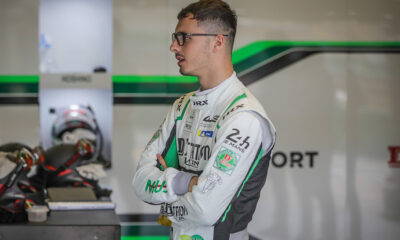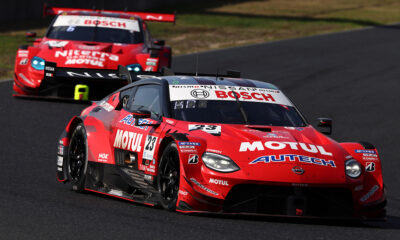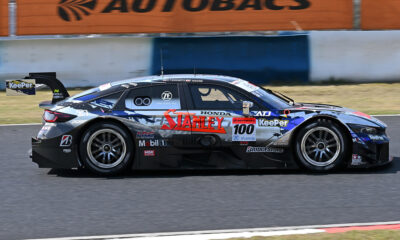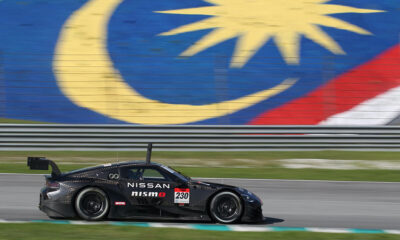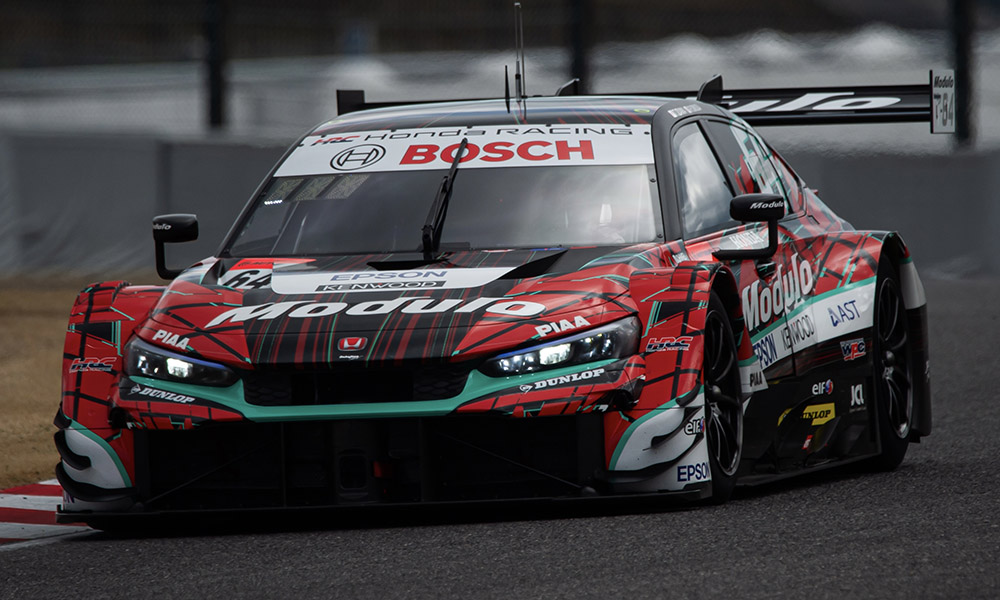
Photo: Konishi Yuya
Dunlop says that the extra testing allowance it has been granted under this year’s SUPER GT rules will not make an impact against the prospect of Bridgestone dominance.
An amendment to the Japanese series’ sporting regulations now gives ‘non-primary’ GT500 tire manufacturers – an oblique reference to Dunlop and Yokohama – an additional 12 hours of in-season testing time per car supplied in the top category.
That comes on top of the standard allowance 16 hours of testing for each tire manufacturer (one car per car manufacturer), which is increased to 32 hours for Dunlop as the only tire manufacturer that didn’t win a race the previous season.
As per last year, Dunlop is supplying only one GT500 car this year, the No. 64 Nakajima Racing Honda Civic Type R-GT, while Bridgestone now has 12 cars, adding the two NISMO-run Nissan Zs to its stable following Michelin’s exit from the top class.
Dunlop Japan’s motorsport department manager Yoshi Yasuda told Sportscar365 that the extra testing allowance wouldn’t be enough to overcome the disadvantage of supplying only a single GT500 car, even if it could be used effectively.
“The extra testing time isn’t that much, and if you consider how many cars Bridgestone has, they are still way ahead of us,” Yasuda said. “They have such a big advantage.
“At the same time, we can’t get so much track time, because the tracks are fully booked, and Nakajima Racing is also doing Super Formula, so the dates we can go testing are anyway very limited.
“We can’t use the whole allowance we’ve been given efficiently, because we need enough time in between the tests to analyze data and bring new things to try.”
Nakajima Racing struggled for competitiveness in the first official test at Okayama International Circuit last weekend, ending up 14th overall on individual times and 15th on combined times in the mock qualifying simulation that was held on Saturday afternoon.
That followed similarly difficult tests for the car driven by Takuya Izawa and newcomer Riki Okusa at Sepang in January and Suzuka at the end of February.
Asked whether the Civic Type R-GT could offer a better platform for success than the NSX-GT it replaces, Yasuda said it was still too early to tell owing to the difficulties Dunlop has faced in testing.
“We don’t have a good idea about the Civic yet because we haven’t really had a good test so far this year,” he said. “The compounds we tried were far off from the target.
“But there’s a lot we have to worry about apart from the car difference. The Civic is said to be less sensitive than the NSX, so that part could be good for us, but we don’t know if that will work the same way at all tracks or not.”
Dunlop’s last GT500 win came at Suzuka in 2017, and the Mie Prefecture venue has often been the Sumitomo brand’s best circuit in recent years, with Izawa scoring poles there in 2020 and 2021.
Yasuda concedes that Dunlop’s main hope of a strong result this season will be SUPER GT’s two visits to Suzuka in June and in August.
“If we could win Suzuka, that would be great,” he said. “In terms of a realistic strategy, that’s all we can aim for. That’s not to say we are developing a tire specifically for Suzuka, but our main focus will be on doing well there.
“We are trying to get more cars, but if we don’t show the performance, nobody will even try our tires, so we have to show something.”



















